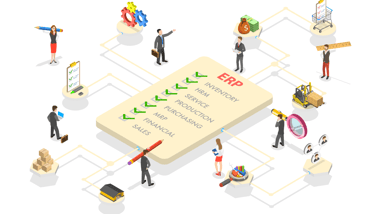As we’ve previously discussed here at Limelight, there are many benefits available to manufacturing firms that make the switch from traditional static spreadsheets to Cloud FP&A. Organizations that change can expect more accurate data, increased efficiency, new insights, and flexible reporting options for a more complete planning process. This change is an integral part of optimizing the FP&A process to produce better insights that are more easily accessible at a lower cost. Every other aspect of manufacturing has been affected positively by automation and innovation, why not finance?
Beyond making the financial process easier and less time-consuming, Cloud FP&A can also offer firms additional benefits such as driver-based planning, enhanced workforce planning capabilities, and fully-fledged financial statements. Taken together, these benefits mean that the office of finance can move from simply reacting to business performance to analyzing it deeply and predicting what will happen in the future.
1. Driver-Based PlanningThe ongoing Covid-19 pandemic has highlighted the need for increased resiliency across the economy and especially in the manufacturing sector. No one knows when the next great disruption will affect organizations or how long it will endure. Increasing resilience is important for all departments in the manufacturing sector and finance teams can leverage new techniques for the quick and efficient re-allocation of resources.
Popularized by the 2003 book Moneyball which dealt with its application in baseball statistics, driver-based planning is a new frontier in FP&A. In the book, the small-market Oakland Athletics used a modified version of driver-based planning to assemble a winning team using fewer resources than other teams by focusing on the hidden drivers of success.
Instead of focusing on outcomes like KPIs, driver-based planning looks at the factors that drive business performance, such as COGS or labor costs, and calculates performance based on those variables. Determining the implications of what-if scenarios is easy with drivers since they create a more predictive and less reactive model that can show more efficient uses of tight resources.
2. Workforce PlanningA disruption directly related to the pandemic was a labor shortage that tore up supply chains and affected daily operations on a huge scale. An area that once seemed relatively stable is now subject to constant change and upheaval. Even when things return to normal, manufacturing firms will still need improved tools to better manage workforce expenditures.
Cloud FP&A has workforce planning capabilities that meet the complex needs of manufacturing organizations during the current shortages and beyond. Users can meet specific workforce requirements head-on, whether they be union, non-union, geographically segmented, or any other combination. Cloud FP&A gives HR the ability to plan labor expenses using financial tools that come with confidentiality protections for sensitive HR information. Organizations can avoid or minimize the damage associated with costly churn cycles.
3. Full-Fledged Financial StatementsControllers in manufacturing organizations need a robust FP&A solution that goes beyond income statements to deliver fully-fledged and detailed reports. With Cloud FP&A finance users can cycle through accounts payable, accounts receivable, and more with added depth and detail. The finance department can look beyond basic information to get an in-depth and flexible look at their financial information for ad-hoc reporting and other uses.
Cloud FP&A delivers this and more to users by not just providing them a variety of reporting options but also giving them the granular detail and interactivity that is required for processes like balance sheet planning. With balance sheet planning, the finance department can plan out individual line items on the balance sheet to account for a variety of performance scenarios. Planning processes like this were previously unavailable to finance teams because of the shortcomings of traditional FP&A methods.
Conclusion:
In the first part of this article, we stated that improved business predictability was one of the most important benefits of making the switch to Cloud FP&A. This remains true and demystifying business performance and needs is one of the most important aspects of FP&A. In this article, we have tried to show that beyond creating predictability, Cloud FP&A also allows manufacturing organizations to respond better to unpredictability and gives them the ability to be predictive rather than reactive in their financial processes.
Cloud FP&A can upgrade the financial tool kit of a manufacturing organization and provide further benefits elsewhere. For more information about the benefits of Cloud FP&A for the manufacturing sector, book a demo with Limelight today.






